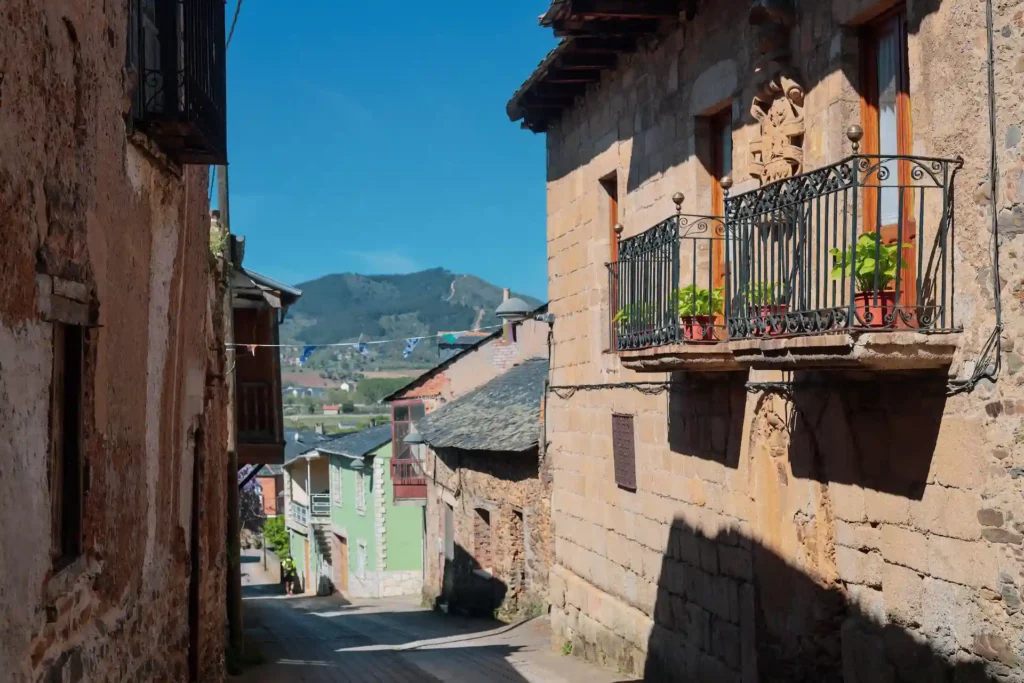Galicia is a great country to live in, we have mild weather, not too hot, not too cold or rainy, a country surrounded by the Atlantic Ocean where food products such as seafood, meat or vegetables are first class and people are friendly and welcoming… That is the reason many people from abroad consider purchasing real estate in Galicia, to either come and spend holidays or even to retire here. Most of these people are UK/US citizens, Canadians and people from the Northern Europe. Another advantage is that prices are lower in Spain than in their own countries.
If you are one of these people, you should read this prior to purchase.
When the real estate or property you wish to purchase is a flat or a building situated in the cities or in urban areas, there is usually no problem but I have detected most of you are interested in purchasing houses in the countryside. There are beautiful stone houses built a century ago or more in the middle of nowhere but they can pose problems. I´m sure that you have thought about the money you´ll need for the purchase and restoration but you may be unaware of other problems that could arise. I´ll try to explain the most common obstacles which have to do with the Cadastral Registry and the Public Land Registry.
WHAT ARE THESE REGISTRIES AND HOW DO THEY WORK?
The Cadastral Registry is a public organism administered by the Tax Office and provides a map of all the existing properties in the country. Local Councils use it to charge owners for real estate/property they own. You can find here any and all land, real estate and properties throughout Spain and ascertain if they are either public or private, the exact size of the land and of the building/s thereon, the year of construction and even if the land is considered urban, rural and, in this last case, if it is rain fed or irrigated or if it is a vineyard or woodland. You won´t however, find who the owner is in the Cadastral Registry, in order to obtain this information out, you will have to go to the Public Land Registry.
The Public Land Registry (Registro de la Propiedad, in Spanish) is where you will carry out your searches to find information about the current owners of the real estate or property you want to purchase. The PLR is mainly a list of the owners that properties have had since their first registration, from the first person who acquired them (maybe in the 18th century) to date. So the list begins and there are no gaps, as the PLR does not allow the registration of an owner without knowledge of the previous one (you will have to go to Court to do that if you don´t want or are unable to fill the gaps). This is called in Spanish “principio de tracto sucesivo” (principle of succeeding tract) and it is the reason why any registration in the PLR is considered truth, even when reality seems otherwise.
There is much more information in the PLR apart from the list of owners. You will also find the measurements of the properties/land, their limits, their description, etc. You may be thinking that this is the same information you´ll find in the Cadastral Registry and that you will find the owner, so why not go to the PLR in the first place and avoid the Cadastral Registry altogether?
And therein lies the problem with rural real estate and properties in Galicia: the information existing in both registries rarely match.
And yes, this is a problem because you will not be able to register the real estate as yours in the PLR if the description, limits, and acreage don´t match the cadastral information.
WHY IS IT SO IMPORTANT TO HAVE YOUR REAL ESTATE/PROPERTY REGISTERED IN THE PLR?
You will definitely find your future property in the Cadastral Registry because the whole of the Spanish territory is mapped out and traceable there. However in the specific case of Galicia, not all real estate/property is registered in the PLR. Even if it is registered, there are problems that can arise, for example when the information held by both Registries doesn´t match.
It is very important that your future purchase be already registered when you buy it, and also that you register it in your own name once you have completed the purchase. Let me show you two examples about why this is so important:
1st.- Buying a real estate that is already registered in the PLR and register it as yours immediately is the only way to protect yourself against third parties:
When you buy your property/real estate from a seller, you have firstly to ensure that the seller is the real owner according to the PLR and then register it immediately in your own name. These two actions protect you against the following:
– The seller tricks you and has sold the property to another person before you but this person hasn´t yet registered it as his/hers. The real estate is yours anyway, even if this person bought it before you. That´s because what figures in the PLR is considered truth (so is presumed that you bought it from the actual owner) and because Spanish civil law says that when there are two buyers of the same property, this will belong to the first person to register it in his/her own name.
– The seller tricks another person into purchasing the property he/she sold to you, however you are protected, the real estate/property is yours for the reasons above.
In these both cases the problem will exist between the seller and this third person but they can touch neither you nor your property, nor your money. Your sale/purchase has more legal value than the other operations.
2nd. – Without the registration in the PLR you will not be able to get a mortgage. If you need a bank loan to purchase your property, the bank will require you to provide some endorsement, the easiest being a mortgage. But banks cannot provide a mortgage for a property that is not registered in the PLR.
As you can see, it is really important that your future purchase is already registered in the PLR and that this registration is duly updated, meaning the current listed owner is the same person who is selling.
HOW CAN YOU REGISTER REAL ESTATE/PROPERTY IN THE PLR FOR THE FIRST TIME?
If the real estate is not registered at all, you should register it for the first time in your own name. To verify if it is registered or not, you can request this information from the PLR, giving them a full description of the property/real estate (location, cadastral number, last known owner…). They will tell you if it is registered or not and if it is, they will also tell you if the registration is up to date. If it is not registered, they will issue a negative certificate.
There are many ways to register a property for the first time in the PLR, but I will explain the most common one which requires no intervention by the Court.
In order to carry out the registration, the PLR will require at least two property titles (as deeds, heritage documents…): the current (your sale/purchase) and the previous one (listed as the property of the previous owner), so the list of owners begins with no gaps, as I said earlier.
These documents or, at least, the current one (yours), must match with the cadastral data. The acreage and limits must be the same as those appearing on the Cadastral Registry and if they do not, you will have to correct the documents to make them match. In order to correct the documents, you will need to hire a professional surveyor to prepare a report informing about the correct measurements and limits of the real estate/property. With this report you can then go to a Notary, for example, and correct the document.
WHAT HAPPENS IF THE REAL ESTATE IS REGISTERED BUT NOT UPDATED?
Let us suppose that the real estate/property is registered but the last owner listed is a person who lived, for example, in 1900. If you do not wish to go to Court, you will have to fill all the gaps first, owner by owner in chronological order and then register yourself after them. This is because of the principle of the aforementioned succeeding tract. As you can see, it could be a very difficult task.
If the owner according to the PLR is the immediate previous owner of the current seller, it will be easy to update, but remember that updating is an obligation of the seller, he/she will have to do it before selling on to you. That is because each registration has a cost and you only have to pay for your own.
On the contrary, if the owner according to the PLR is a person who lived in 1900 or a distant ancestor of the seller, my recommendation is not to buybecause the task of filling the gaps will be almost impossible and you will probably have to go to Court.
WHAT HAPPENS IF THE REAL ESTATE IS REGISTERED IN THE PLR BUT THE INFORMATION DOES NOT MATCH WITH THAT OF THE CADASTRAL REGISTRY?
As I said before, information rarely matches between both registries in the case of Galician country properties and land. In order to make them match the procedure is the same as I have mentioned above: hire a professional surveyor who prepares a report with the real acreage, borders, description… There are three options and two of them may require intervention by the Court:
– If the PLR data is correct but not the cadastral, you will have to modify the Cadastral Registry first and then register the real estate/property in the PLR.
– If the cadastral data matches but not that of the PLR, the PLR may not allow the registration without going to Court and that is because the information existing in the PLR is considered to be true. I said “may not” because it depends on how big the differences are, proportionally speaking. For example
Let us say your real estate or property has an acreage of 1.000 square meters but 1.100 square meters according to the PLR. This difference of 100 square meters in proportion to the whole acreage is not that large but if the difference is, for example, 700 square meters, that is a big difference, almost doubling the size.
In this last case, the PLR would not allow registration because they will suppose that you are trying to take land away from a third party with a view to registering land that is not yours. The same thing occurs if the actual size of the land is much smaller than that reflected at the PLR, in that case they will suppose that you are trying to register a plot of land illegally and registration would not be permitted (without going to Court).
– If the information at both the Cadastral and the PLR is not true, you then have the same dilemma as described above and you are dependent on how big the differences are between reality and PLR. If they are considerable, you will need to take it to Court so I must advise you to not waste your time trying to fix the Cadastral Registry. But if they are not too distant from the truth, you should firstly fix the Cadastral Registry before register it at the PLR.
My recommendation is to not buy the real estate/property when the differences between reality and PLR are too great because you will not be able to register it without going to Court and this increases the price of the property exponentially.
CONCLUSION
Everything I have just explained is due to the fact that Galicia is a small but very rugged country and that many of its rural properties and land are the result of divisions and subdivisions caused by hereditary distributions over the centuries. This also means that sometimes a single property has ten or more owners, making everything more difficult. All these specific characteristics of our country have sometimes caused plots of land to be of shapes and sizes that a foreigner may find strange and that is also the reason behind the differences between the two registries, the PLR is local but the Cadastral Registry is state-owned and mapped by people who do not know Galicia. I have explained just a few problems that can occur but there are many more possible and this is why I think it is highly recommendable to hire not only a lawyer, but a Galician lawyer, when you are going to buy land or property in this region. As lawyer based in Vigo, I remain at your disposal for all your legal requirements when deciding to invest in property or land in Galicia.



